



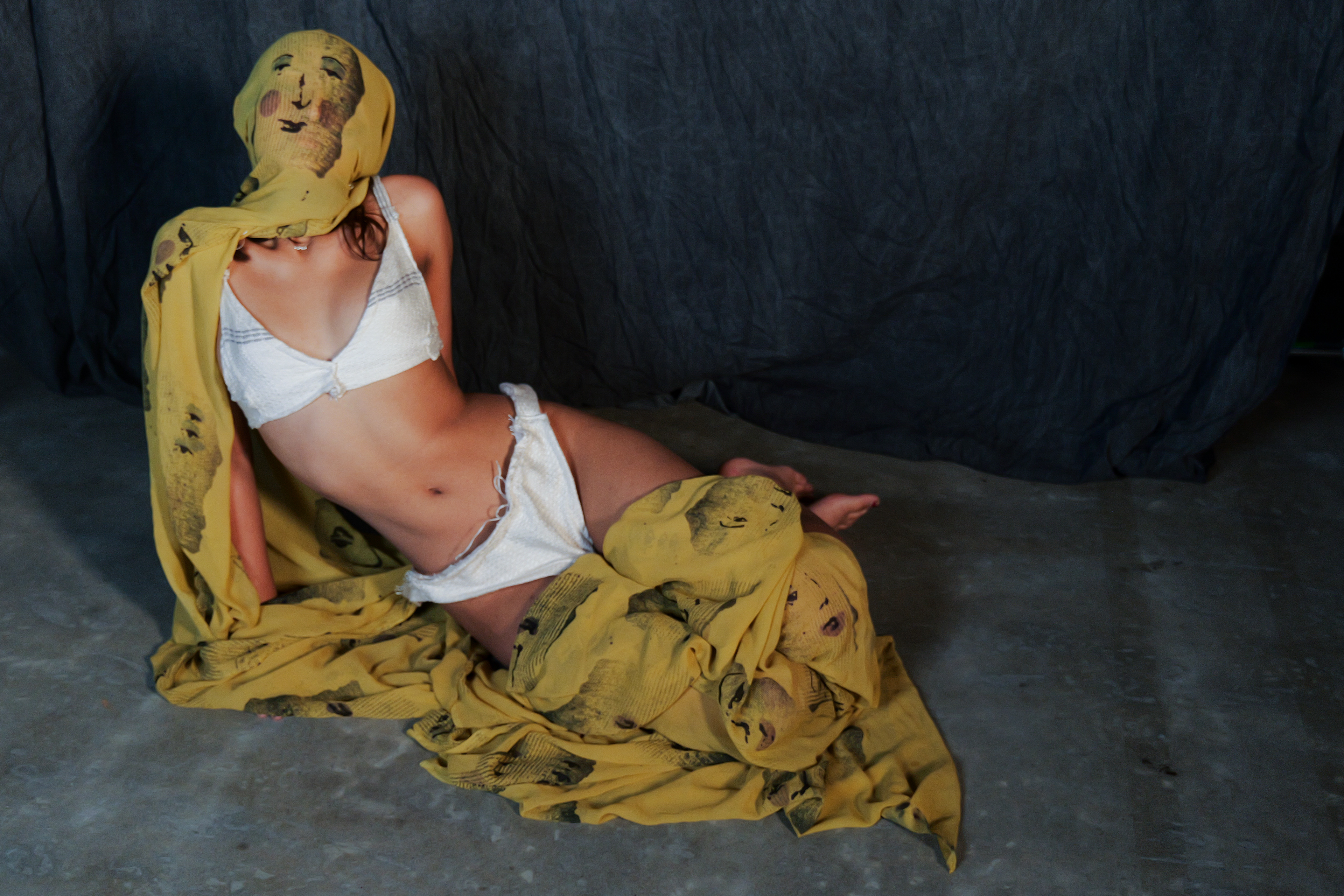
Archive of 4-harness floor loom work from samples to research.
"Remanants". Silk, Cotton. Final Zero-Waste Lingerie Proposal. (More Images Coming Soon)

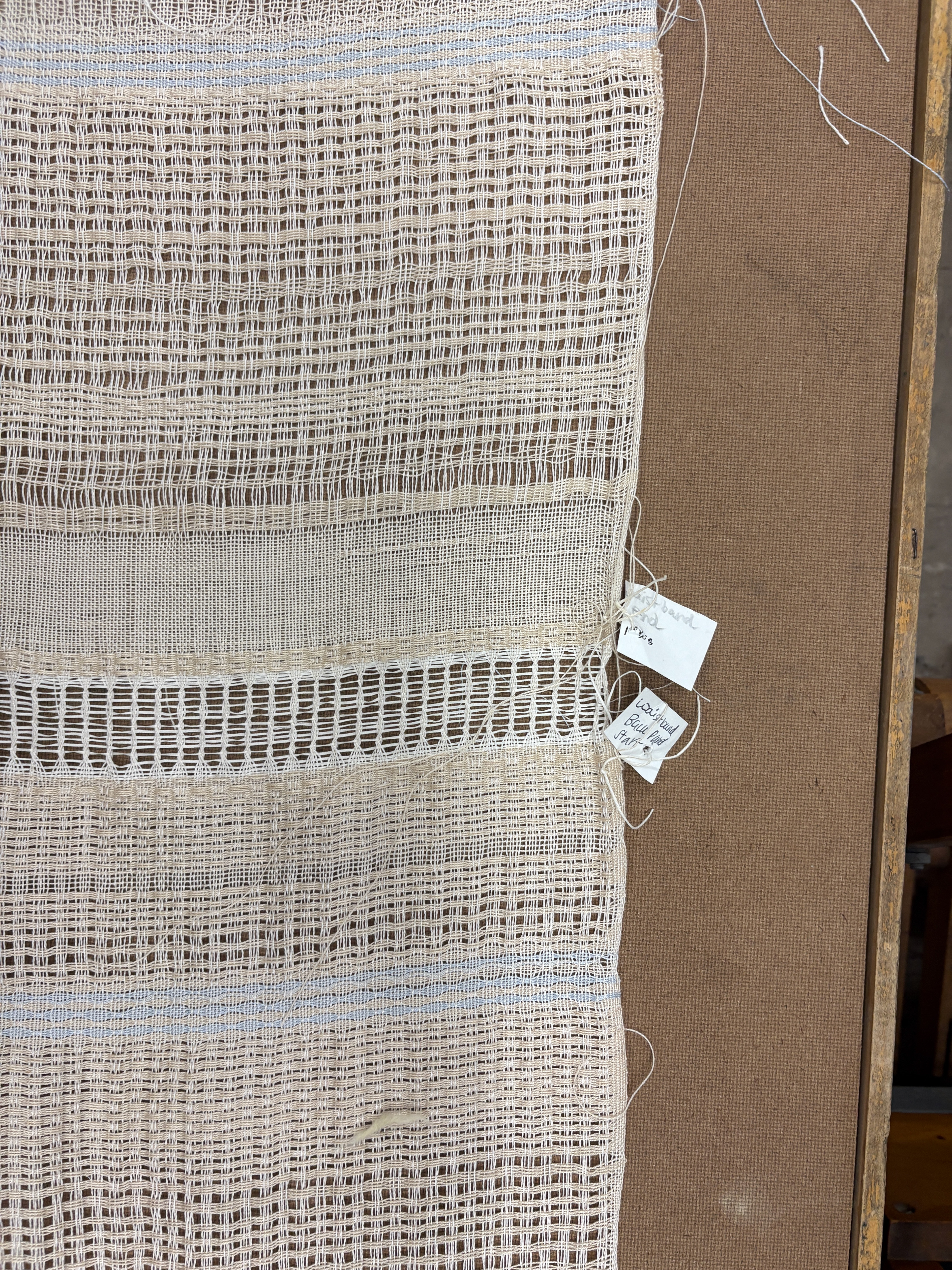


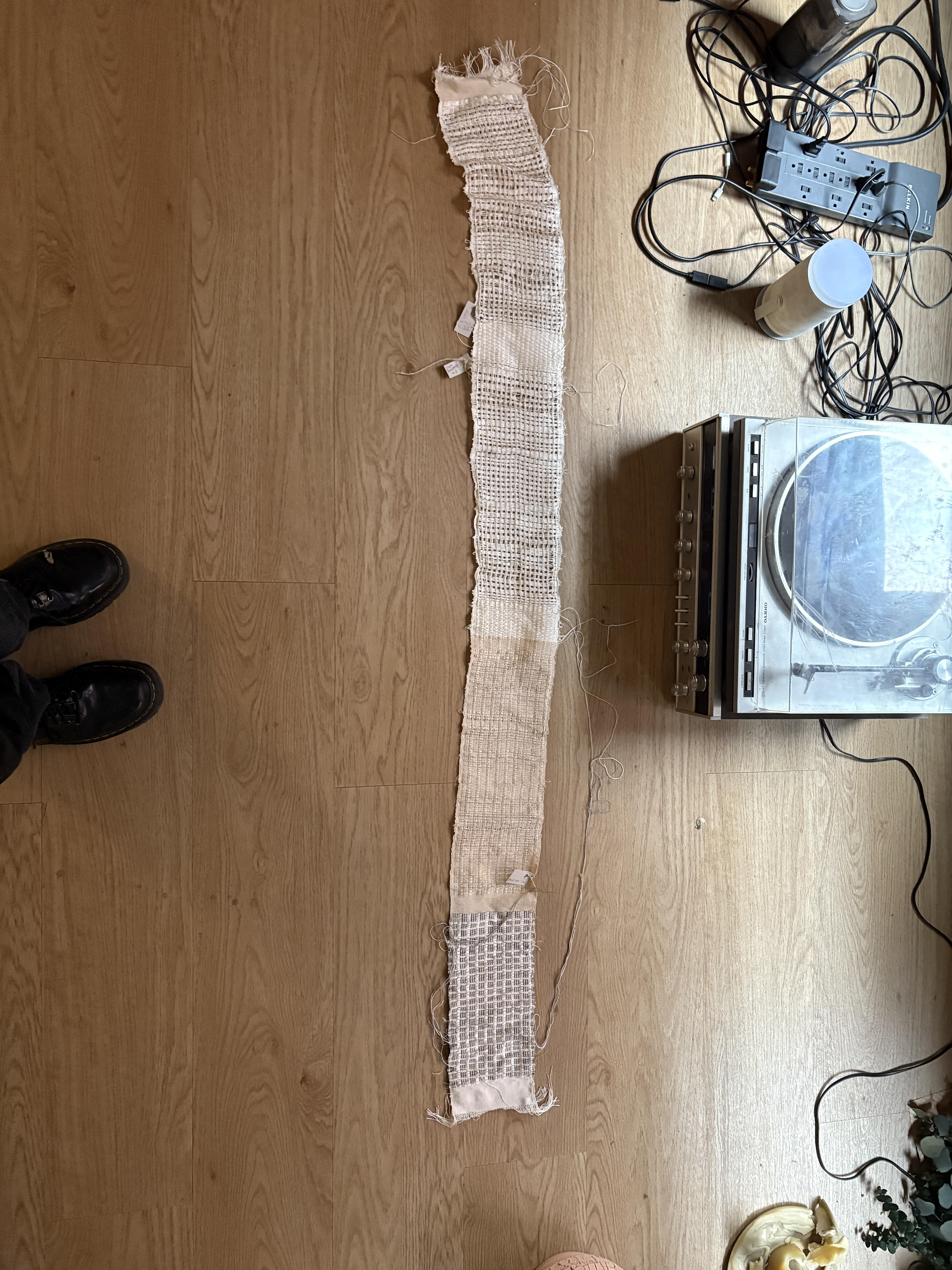
"Crop Circles" Midterm Blanket. Cotton.
Inspired by satellite images of crop circles I observed while flying home across the US.
"Denim Squares". Wool and Cotton.
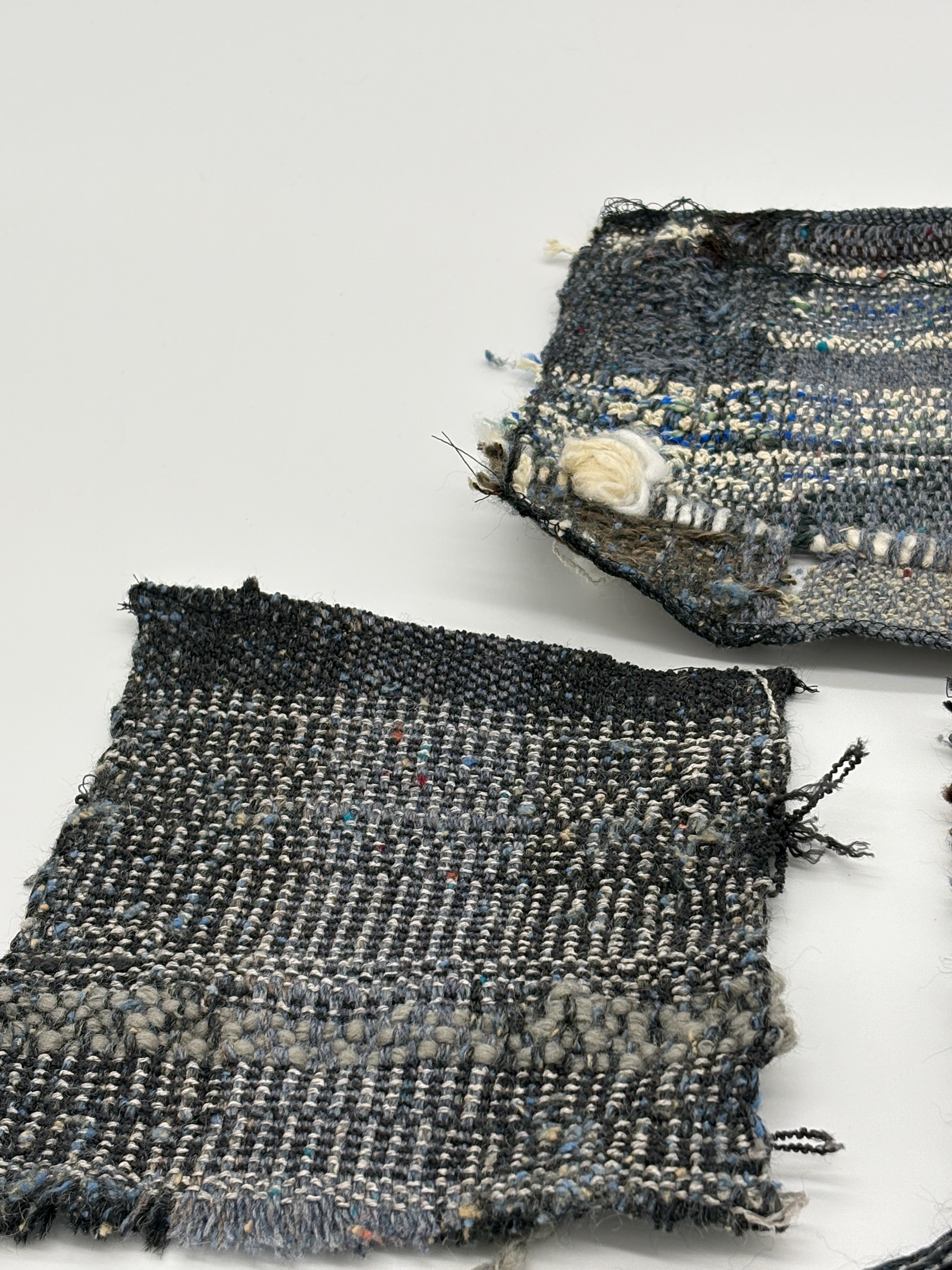
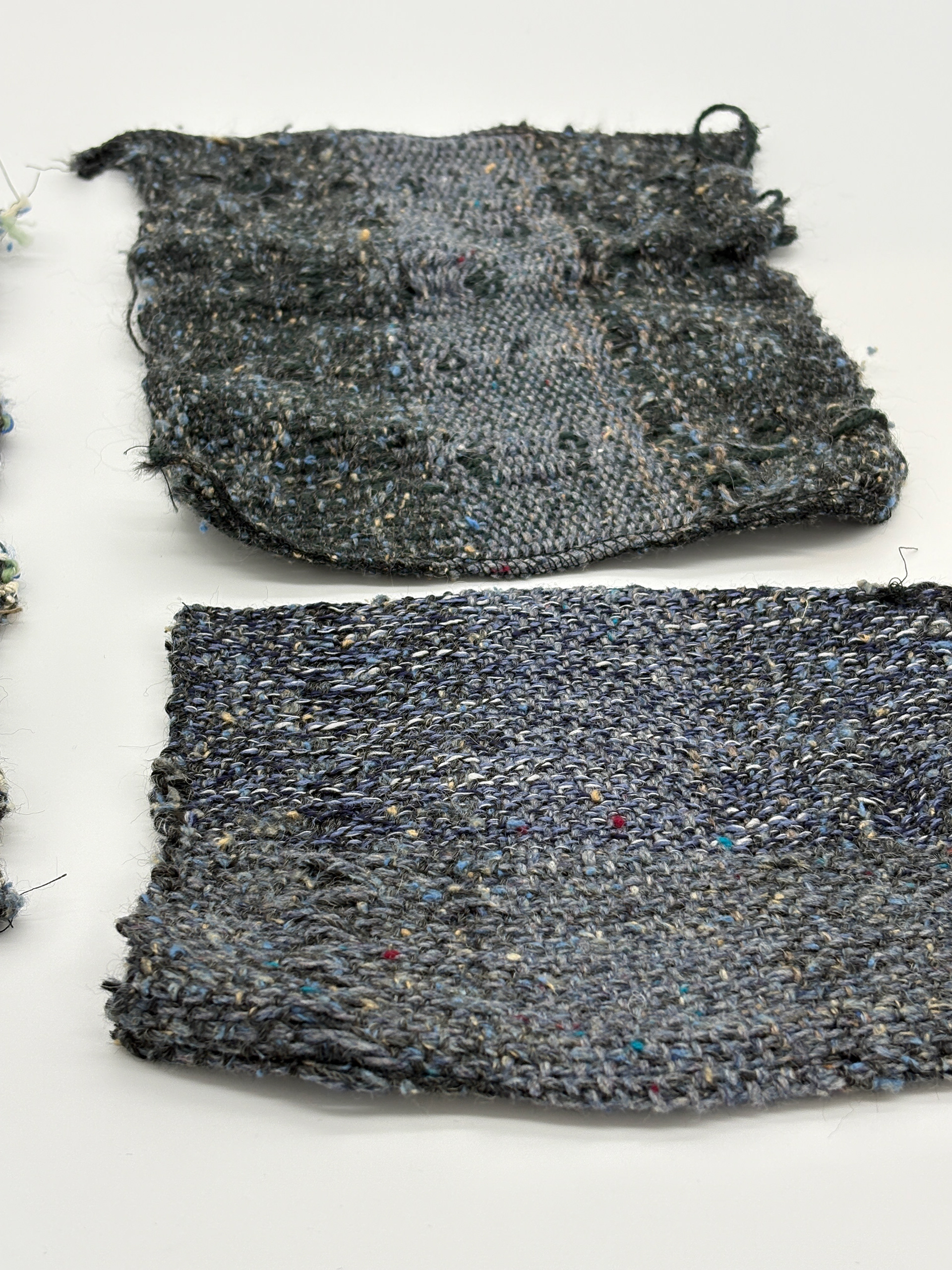
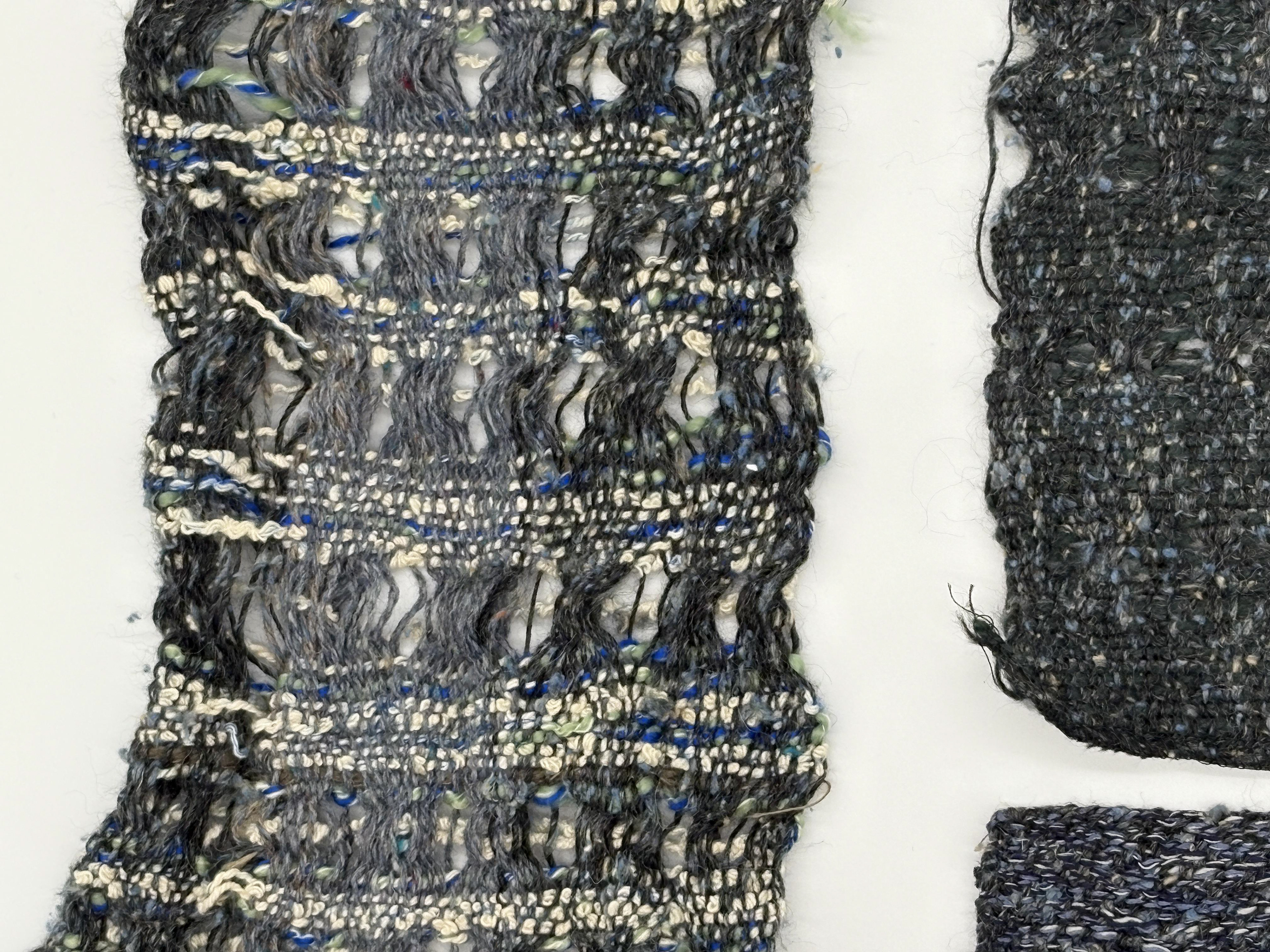
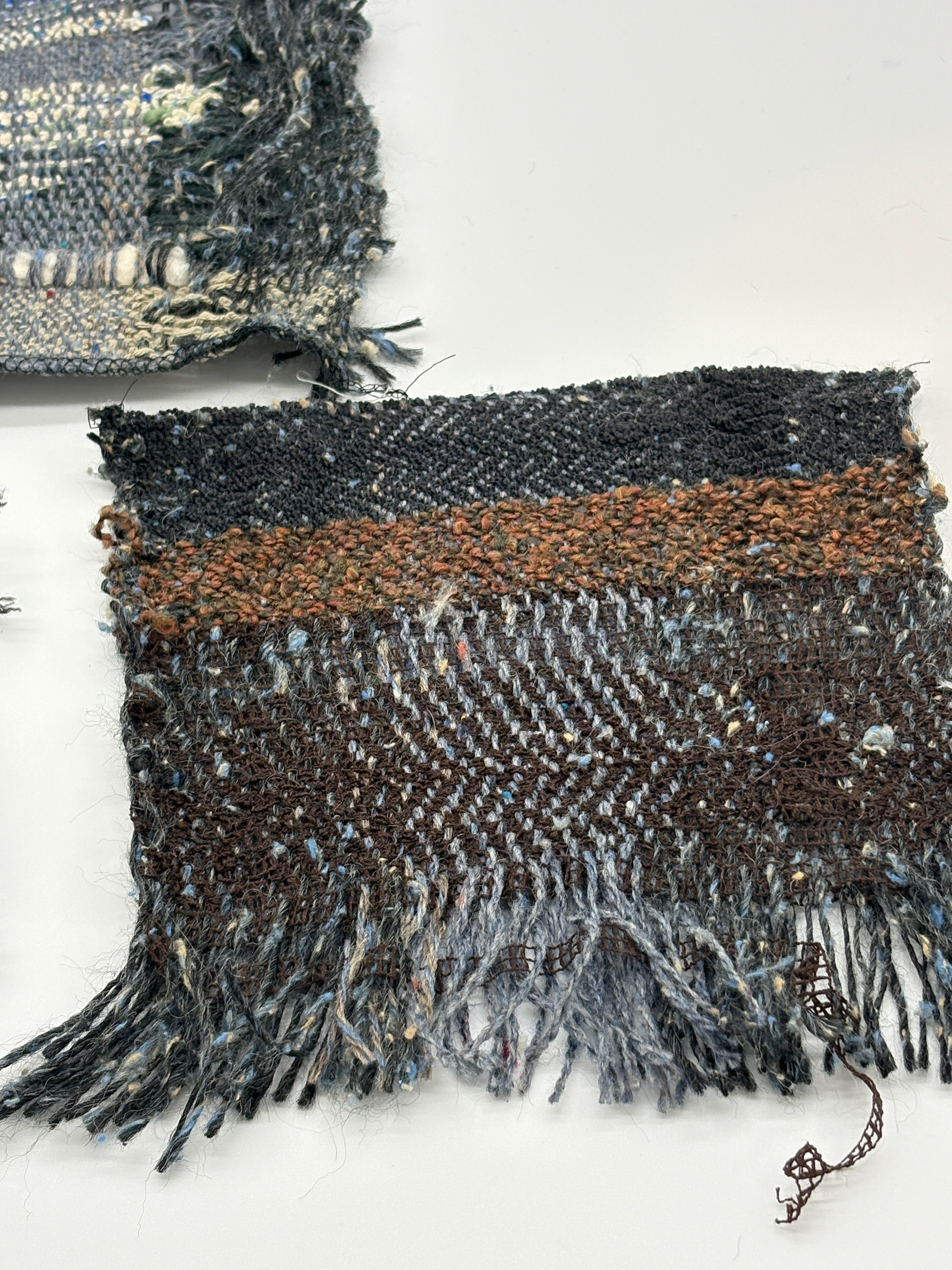
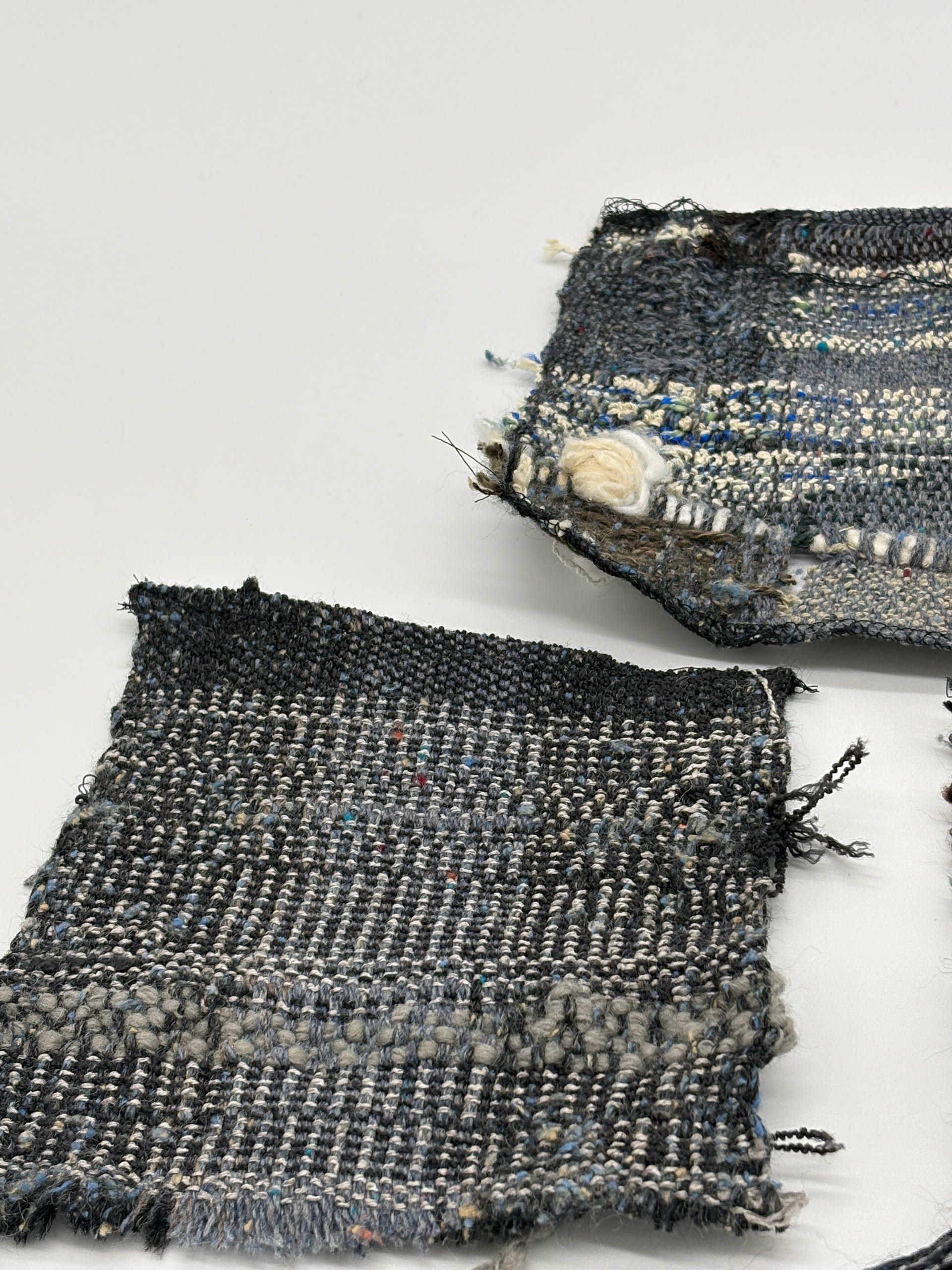

Scarlett Meza Artist Statement - Silkscreen Focused - Revised 05/26/25
While I was weaving this project, I listened to the audiobook of Susan Sontag’s On Women and pulled one of her responses from the Salmagundi Interview, that struck me in the moment in relation to my concepts and the work I had been creating.
“And it is only normal that we are aware of ourselves as persons in an historical continuum, with indefinite thicknesses of past behind us, the present a razor’s edge, and the future—well, problematic is one damp word for it. Dividing time into Past, Present & Future suggests that reality is distributed equally among three parts, but in fact the past is the most real of all. The future is, inevitably, an accumulation of loss, and dying is something we do all our lives. If artists are memory specialists, professional curators of consciousness, they are only practicing—willfully, obsessionally—a prototypical devoutness. There is a tilt in the very experience of living which always gives memory an advantage over amnesia.
[...] And art is the most general condition of The Past in the present. To become “past” is, in one version, to become “art.” (The arts that most literally illustrate this mutation are architecture and photography.) The pathos that all works of art reek of comes from their historicity. From the way they are overtaken by physical decay and stylistic obsolescence. And from whatever is mysterious, partly (and forever) veiled about them. And simply from our awareness, with each work, that no one would or could ever do exactly that again. Perhaps no work of art is art. It can only become art, when it is part of the past. In this normative sense, a “contemporary” work of art would be a contradiction—except so far as we can, in the present, assimilate the present to the past.” (Link to interview)
---------
I imagine a future where zero waste is taken to the extreme. Humankind begins to wear less and less clothing until we are all walking around in lingerie. As we started out primitively, we were nude, and in my future, we end nude. The new “nudity” becomes showing your face, and masks become the new clothes.
This screen-printed fabric is meant to be performed as masks. Wearers would stand beneath the masks pulled back from behind. The masks could have been new or dust-laden antiques from a box in an attic, and carry a certain timelessness. Inspired by the masks worn by members of the Oddfellows, a British secret society who did charitable works, this yardage of fabric is meant to be performed, stepped under and tied around the face from the back like a Margiela mask. These masks play with this concept of anonymity in this future I have imagined.
The masks started as a vision I felt I had to follow. I have this certain appreciation or perhaps obsession with old, slightly worn and tattered objects, and was passively always searching for the answer to why. Why is the old, the tattered, the moth-eaten or antique so appealing? Sontag’s words on “The pathos that all works of art reek of comes from their historicity. From the way they are overtaken by physical decay and stylistic obsolescence. And from whatever is mysterious, partly (and forever) veiled about them,” offers me an answer. I like to imagine these masks as being timeless, and Sontag’s concept of obsolescence, of items that are so outdated or perhaps no longer even useful on a utilitarian level attracts me, the frivolous attracts me: masks and lingerie are two accessories, relegated largely to craftsmanship goods of another era. In my future, a future tainted by the digital or maybe post-digital age, society structures itself around frivolity.
At the beginning of the semester, I wandered into a Christo and Jeanne-Claude exhibition near the Hudson Yards. Christo and Jeanne-Claude’s veiling spoke to me in a time when I was facing an adult responsibility for the first time, and the city felt overwhelming. I wanted to hide myself away. Their concealed monuments and “The Gates” in particular felt like putting a dust cloth over old furniture and stowing it away in the attic for safe-keeping. This similar sense of age informed my color palette choices, especially the aged yellowed background of my masks, from pomegranate dye and the muted colors.
In my future, the climate has become so hot that we do not need to wear clothes at all, or perhaps the clothes have become so advanced, they can heat-regulate the body. Materials have shifted to be all biodegradable, pre-industrial materials. Silk, cotton, linen are all used and minimal dyeing. The time is uncanny, a nothing time of no-time-in-particular: color palettes are natural and primal--bone white, blood red, black iron ore--and the styles too could be from Victorian times, from now, or from the dawn of time. The masks are printed with my own natural dye pigments paste from cochineal for blush, to osage and iron for green makeup, to logwood and iron which forms the black of the facial structure. Additional half-tone and makeup stencil screens allowed me to make-up these faces complete with blush, lipstick, and eyeshadow.
Hiding, wrapping, concealment, and folding are used to disguise and privatize the face against the exposition of our information age, the impact of which is felt on this future society. Timo Rissanen and Holly McQuillan’s book “Zero Waste Fashion Design” has been highly influential to me. They pose that the long and disconnected chain of global trade has been a major cause of pollution: a pattern piece can be designed in one country, patterned by another person, cut and graded by another, and sewn somewhere else, but somebody completely different who often remains anonymous. In this way, the long chain of design is also concealed and veiled from us. Much like the current fashion industry, dyes like indigo and cochineal played a big part in the global commodity trade and its accompanying exploitation. In this way, my interests in zero-waste pattern design in weaving, and using natural screenprint pigments are linked. My performance of these masks aims to put this history on display, while proving that these ancient processes have a place in our future.